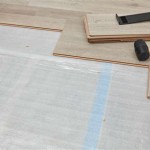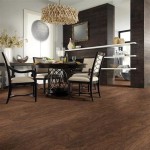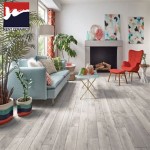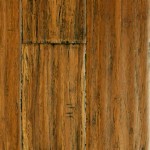No Glue Vinyl Flooring Reviews: A Comprehensive Guide
No glue vinyl flooring has emerged as a popular choice for both residential and commercial spaces. Its ease of installation, durability, and diverse aesthetic options make it an attractive alternative to traditional flooring materials. This article provides a detailed review of no glue vinyl flooring, exploring its various types, advantages, disadvantages, installation process, and maintenance requirements.
The term "no glue vinyl flooring" encompasses several types of flooring solutions that do not require adhesives for installation. Instead, these floors utilize interlocking systems, friction, or gravity to stay in place. This eliminates the mess and potential health hazards associated with traditional glues and simplifies the installation process significantly.
Types of No Glue Vinyl Flooring
The no glue vinyl flooring category includes several distinct types, each with its own characteristics and benefits. Understanding these differences is crucial for selecting the most appropriate flooring for a specific need.
Luxury Vinyl Plank (LVP): LVP flooring mimics the appearance of hardwood. It comes in long, narrow planks and often features realistic wood grain textures. LVP is typically thicker than other vinyl flooring options, providing enhanced durability and comfort underfoot. Its interlocking installation system makes it a popular choice for DIY projects.
Luxury Vinyl Tile (LVT): LVT replicates the look of stone or ceramic tile. It is available in square or rectangular shapes and can be installed in various patterns. LVT shares similar characteristics with LVP, including durability, water resistance, and easy installation. The visual appeal of LVT makes it suitable for kitchens, bathrooms, and other areas where a tile-like appearance is desired.
Sheet Vinyl: While some sheet vinyl requires glue, many newer options are available with loose-lay or click-lock installation systems. Sheet vinyl comes in large rolls, which can be cut to fit the dimensions of a room. This results in fewer seams, providing a more seamless and water-resistant surface. Sheet vinyl is often a cost-effective option, particularly for larger areas.
WPC (Wood Plastic Composite) Vinyl Flooring: WPC flooring combines wood pulp and plastic composites to create a waterproof and dimensionally stable core. This core is topped with a vinyl layer that provides the desired aesthetic. WPC flooring is known for its resistance to moisture, making it suitable for bathrooms and basements.
SPC (Stone Plastic Composite) Vinyl Flooring: SPC flooring, also known as rigid core vinyl, uses a core made of stone powder and stabilizers. This creates an extremely durable and rigid flooring option that is resistant to dents and scratches. SPC flooring is often chosen for high-traffic areas and commercial applications.
Advantages of No Glue Vinyl Flooring
No glue vinyl flooring offers numerous advantages over traditional flooring options, contributing to its increasing popularity among homeowners and businesses alike.
Easy Installation: The primary advantage of no glue vinyl flooring is its simplified installation process. Interlocking systems or loose-lay methods eliminate the need for messy adhesives, reducing installation time and labor costs. This makes it a popular choice for DIY projects, as homeowners can often install the flooring themselves without professional assistance.
Water Resistance: Most no glue vinyl flooring options are highly water-resistant, and some are even completely waterproof. This makes them suitable for areas prone to moisture, such as kitchens, bathrooms, and basements. Unlike hardwood flooring, vinyl flooring will not warp or swell when exposed to water, making it a durable and long-lasting choice.
Durability and Longevity: Vinyl flooring is known for its durability and resistance to wear and tear. It can withstand heavy foot traffic, scratches, and stains, making it ideal for busy households and commercial spaces. The thicker the wear layer of the vinyl flooring, the better it will resist damage over time.
Comfort and Sound Absorption: Vinyl flooring provides a comfortable surface underfoot. Many options include a cushioned layer that enhances comfort and reduces noise transmission. This makes it a good choice for apartments and homes with multiple levels.
Aesthetic Versatility: No glue vinyl flooring is available in a wide range of styles, colors, and patterns. It can mimic the look of hardwood, stone, or ceramic tile, allowing homeowners to achieve their desired aesthetic without the cost or maintenance associated with natural materials. The photographic layer of vinyl flooring can be printed with virtually any design, offering endless possibilities.
Cost-Effectiveness: Compared to hardwood, stone, or ceramic tile, vinyl flooring is often a more affordable option. The lower material costs and simplified installation process can result in significant savings for homeowners and businesses.
Easy Maintenance: Vinyl flooring is relatively easy to maintain. Regular sweeping or vacuuming is sufficient to remove dirt and debris. For deeper cleaning, a damp mop with a mild detergent can be used. Vinyl flooring is resistant to stains and spills, making it a practical choice for busy households.
Disadvantages of No Glue Vinyl Flooring
Despite its many advantages, no glue vinyl flooring also has some potential drawbacks that should be considered before making a purchase.
Subfloor Requirements: While installation is generally easier, no glue vinyl flooring still requires a smooth and level subfloor. Imperfections in the subfloor can telegraph through the vinyl, creating an uneven surface. In some cases, it may be necessary to prepare the subfloor by leveling it with a self-leveling compound or installing an underlayment.
Potential for Gaps: With interlocking systems, there is a potential for gaps to appear between planks or tiles over time, especially if the flooring is not properly installed or if the subfloor is not perfectly level. These gaps can trap dirt and debris and may require periodic maintenance to correct.
Limited Repair Options: While vinyl flooring is durable, it can still be damaged by sharp objects or heavy impacts. Repairing damaged sections of no glue vinyl flooring can be challenging, depending on the installation method. In some cases, it may be necessary to replace an entire plank or tile, which requires having extra material on hand.
Environmental Concerns: Some vinyl flooring products contain phthalates, which are chemicals that have been linked to health concerns. It is important to choose vinyl flooring that is certified as low-VOC (volatile organic compounds) and phthalate-free to minimize potential health risks.
Not as Durable as Some Natural Materials: While durable, vinyl flooring generally does not last as long as some natural materials like hardwood or ceramic tile. It is more susceptible to scratches and dents, particularly in high-traffic areas. The lifespan of vinyl flooring can vary depending on the quality of the product and the level of use.
Installation Process
The installation of no glue vinyl flooring is generally straightforward, but it is important to follow the manufacturer's instructions carefully to ensure a successful outcome.
Preparation: Before starting the installation process, the subfloor must be clean, dry, and level. Remove any existing flooring, debris, and imperfections. If necessary, repair or level the subfloor to provide a smooth surface for the vinyl flooring. Acclimatize the vinyl flooring to the room for at least 48 hours before installation. This allows the material to adjust to the temperature and humidity of the environment, minimizing expansion or contraction after installation.
Layout: Plan the layout of the flooring to minimize waste and ensure a visually appealing pattern. Start by determining the center of the room and working outwards. Pay attention to the direction of the planks or tiles, especially if they have a wood grain or other pattern. Leave a small expansion gap around the perimeter of the room to allow for natural movement of the flooring.
Installation: Follow the manufacturer's instructions for the specific type of no glue vinyl flooring being installed. Interlocking systems typically involve aligning the edges of the planks or tiles and clicking them together. Loose-lay methods rely on friction and gravity to hold the flooring in place. Use a tapping block and rubber mallet to ensure a tight and secure fit between the planks or tiles.
Finishing: Once the flooring is installed, trim any excess material and install baseboards or moldings to cover the expansion gap around the perimeter of the room. Clean the flooring thoroughly to remove any dirt or debris.
Maintenance and Care
Proper maintenance and care can significantly extend the lifespan of no glue vinyl flooring and keep it looking its best.
Regular Cleaning: Sweep or vacuum the flooring regularly to remove dirt and debris. Use a soft-bristled broom or a vacuum cleaner with a floor brush attachment to avoid scratching the surface.
Damp Mopping: Clean the flooring with a damp mop and a mild detergent. Avoid using excessive water, as this can seep into the seams and damage the subfloor. Use a pH-neutral cleaner specifically designed for vinyl flooring.
Stain Removal: Clean up spills and stains immediately to prevent them from setting. Use a soft cloth and a mild cleaning solution to remove stubborn stains. Avoid using abrasive cleaners or harsh chemicals, as these can damage the surface of the vinyl flooring.
Protection: Place mats or rugs in high-traffic areas to protect the flooring from wear and tear. Use furniture pads under the legs of chairs and tables to prevent scratches. Avoid dragging heavy objects across the flooring.
Sunlight Exposure: Prolonged exposure to direct sunlight can cause vinyl flooring to fade or discolor over time. Use curtains or blinds to protect the flooring from excessive sunlight.
Loose Lay Vinyl Plank Flooring Pros Cons Floorings

What Is Loose Lay Vinyl Flooring A Plank Guide Reallyfloors America S Est Hardwood

Unbiased Luxury Vinyl Plank Flooring Review Cutesy Crafts

Vinyl Vs Laminate Flooring Pros Cons And Differences Forbes Home

Glue Down Vs Floating Lvp Which Is Better Whole Cabinet Supply

L And Stick Vinyl Plank Flooring 101 Floorings

Vinyl Flooring Pros And Cons Forbes Home

My Luxury Vinyl Plank Flooring Review Pros And Cons Average But Inspired

Vinyl Plank Flooring Review 2 Years Later Love Renovations

Vinyl Plank Flooring Review After One Year In Our Home
Related Posts








